A colorless liquid. Less dense than water. Contact may irritate skin, eyes and mucous membranes. May be toxic by ingestion. Used to make other chemicals.
An explosion occurred upon heating 1'-pentol and 9-Octadecenoic acid (Z)-, ester with 2,2-bis(hydroxymethyl)-1,3-propanediol under hydrogen pressure. 9-Octadecenoic acid (Z)-, ester with 2,2-bis(hydroxymethyl)-1,3-propanediol appears that this acetylenic compound under certain conditions suddenly breaks down to form elemental carbon, hydrogen, and carbon monoxide with the release of sufficient energy to develop pressures in excess of 1000 atmospheres [AIChE Loss Prevention 1967. p. 1].
TOXIC; inhalation, ingestion or skin contact with material may cause severe injury or death. Contact with molten substance may cause severe burns to skin and eyes. Avoid any skin contact. Effects of contact or inhalation may be delayed. Fire may produce irritating, corrosive and/or toxic gases. Runoff from fire control or dilution water may be corrosive and/or toxic and cause pollution.
Combustible material: may burn but does not ignite readily. When heated, vapors may form explosive mixtures with air: indoors, outdoors and sewers explosion hazards. May polymerize explosively when heated or involved in a fire. Contact with metals may evolve flammable hydrogen gas. Containers may explode when heated. Runoff may pollute waterways. Substance may be transported in a molten form.
